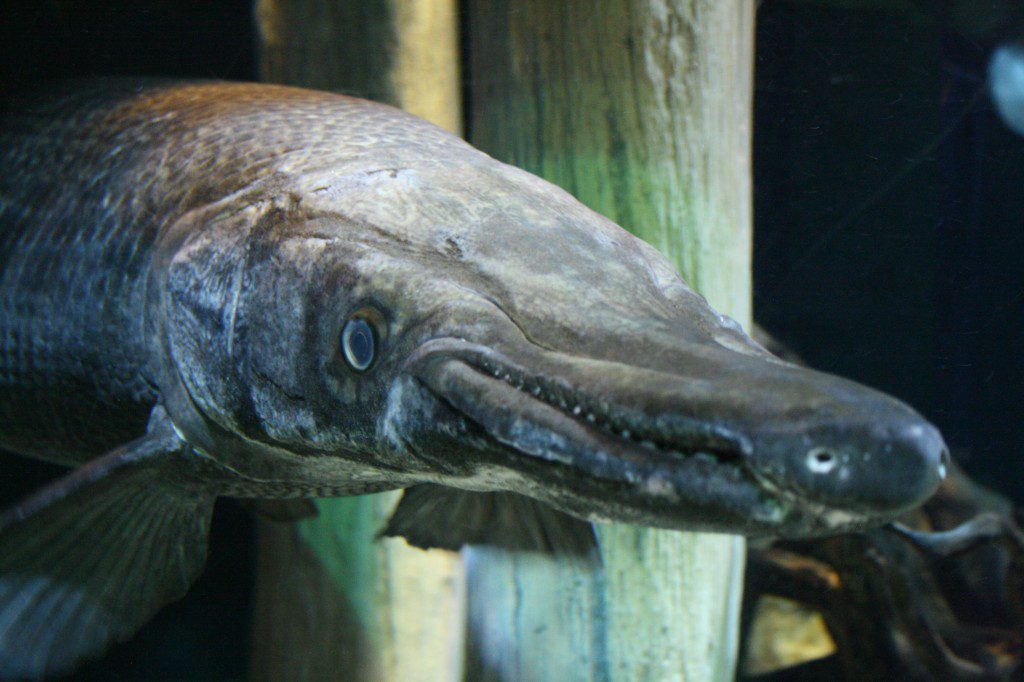
Old timers’ stories and photos tell of how local rivers once teemed with alligator gar – armored giants with three rows of slicing teeth that made them apex predators. Human development (and prejudice) changed that, but recent efforts may keep this native ally around a little longer.
The largest species of gar, the alligator gar is also among the largest freshwater fish in North America, found throughout the southeastern U.S.
Known to reach up to 350 pounds, the adult alligator gar resembles its namesake and can appear intimidating, but its true nature is more complex, says Brian Fillmore, a biologist with the Tishomingo National Fish Hatchery.
“They want nothing to do with humans,” Fillmore says. “They’re more afraid of humans than we are of them.”
Carnivores that have preyed on other fish species – as well as their own – for millions of years, alligator gar are essential to ecosystems, he adds. They remove fish that are old, weak and sick, allowing juvenile fish – bass, catfish and other species – the chance to flourish.
Once considered a scourge and competitor, the alligator gar has been subjected to campaigns encouraging fishermen to destroy them. Dams have also made it more difficult for this sensitive species to spawn by preventing river floods, which create slow-moving water zones thick with vegetation for alligator gar hatchlings – or fry – to hide in, Fillmore says.
As a result, the species has declined, confirmed in Oklahoma Department of Wildlife surveys. State and federal wildlife offices, however, have stepped in to help by regulating harvesting of the species and restocking it around the region.
Over the years, the hatchery in Tishomingo has hatched, raised and released fry into waters in other states to repopulate and also help control the invasive Asian carp. Later this summer, the hatchery will release fishery-raised juvenile alligator gar into the Red River basin and Lake Texoma area – the first time it has restocked into Oklahoma waters, Fillmore says.
The effort is more than worthwhile.
“Once, they’re gone, they’re gone,” he adds. “There’s no bringing them back.”






















